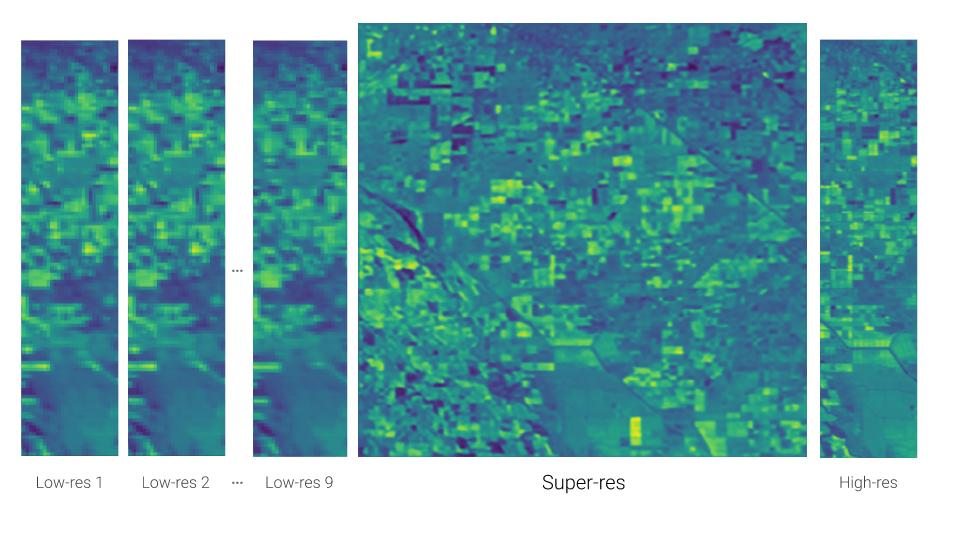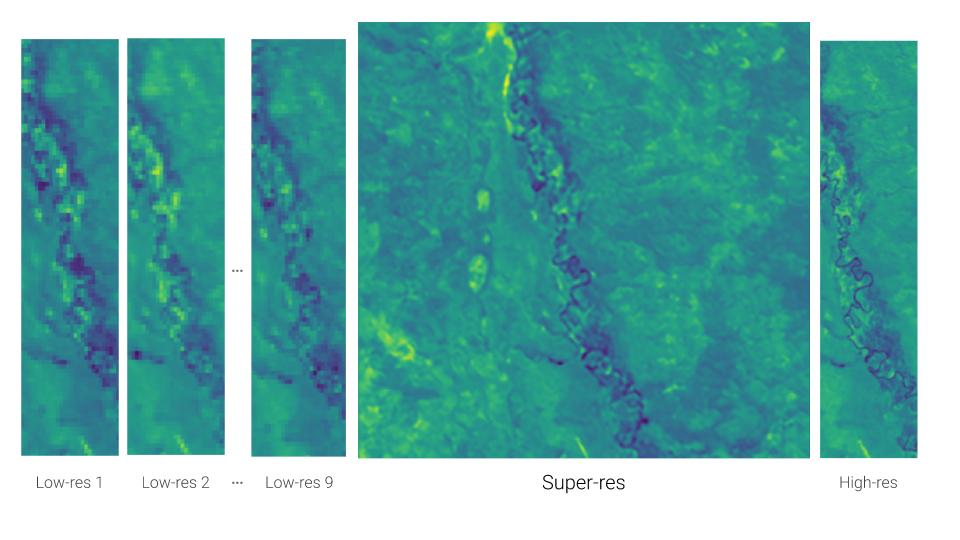Pytorch implementation of HighRes-net, a neural network for multi frame super-resolution (MFSR), trained and tested on the European Space Agency's Kelvin competition.
source: ElementAI blog post Computer, enhance please!
credits: ESA Kelvin Competition
The default config should work on a machine with:
GPU: Nvidia Tesla v100, memory 32G
Driver version: CUDA 10.0
CPU: memory 8G to enable running jupyter notebook server and tensorboard server
If your available GPU memory is less than 32G, try following to reduce the memory usage
(1) Work with smaller batches (batch_size in config.json)
(2) Work with less low-res views (n_views and min_L in config.json, min_L is minimum number of views (n_views))
According to our experiments, we estimated the memory consumption (in GB) given batch_size and n_views
batch_size \ n_views and min_L |
32 | 16 | 4 |
|---|---|---|---|
| 32 | 27 | 15 | 6 |
| 16 | 15 | 8 | 4 |
- Setup a python environment and install dependencies, we need python version >= 3.6.8
pip install -r requirements.txt
1. Load data and save clearance
-
Download the data from the Kelvin Competition and unzip it under data/
-
Run the save_clearance script to precompute clearance scores for low-res views
python src/save_clearance.py --prefix /path/to/ESA_data
- Train a model with default config
python src/train.py --config config/config.json
- View training logs with tensorboardX
tensorboard --logdir='tb_logs/'
- Open jupyter notebook and run notebooks/test_model.ipynb
- We assume the jupyter notebook server runs in project root directory. If you start it in somewhere else, please change the file path in notebooks accordingly
You could also use docker-compose file to start jypyter notebook and tensorboard
HighRes-net is based on work by team Rarefin, an industrial-academic partnership between ElementAI AI for Good lab in London (Zhichao Lin, Michel Deudon, Alfredo Kalaitzis, Julien Cornebise) and Mila in Montreal (Israel Goytom, Kris Sankaran, Md Rifat Arefin, Samira E. Kahou, Vincent Michalski)
This repo is under apache-2.0 and no harm license, please refer our license file
Special thanks to Laure Delisle, Grace Kiser, Alexandre Lacoste, Yoshua Bengio, Peter Henderson, Manon Gruaz, Morgan Guegan and Santiago Salcido for their support.
We are grateful to Marcus Märtens, Dario Izzo, Andrej Krzic and Daniel Cox from the Advanced Concept Team of the ESA for organizing this competition and assembling the dataset — we hope our solution will contribute to your vision for scalable environmental monitoring.


